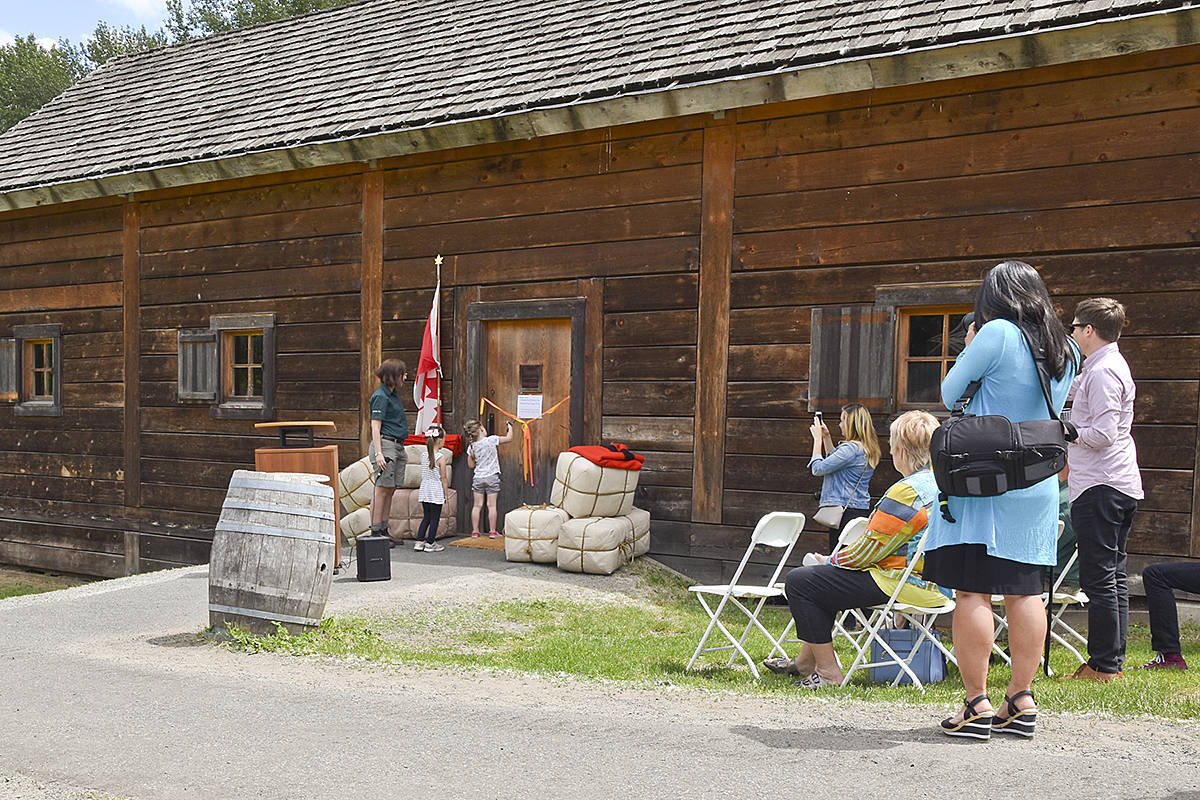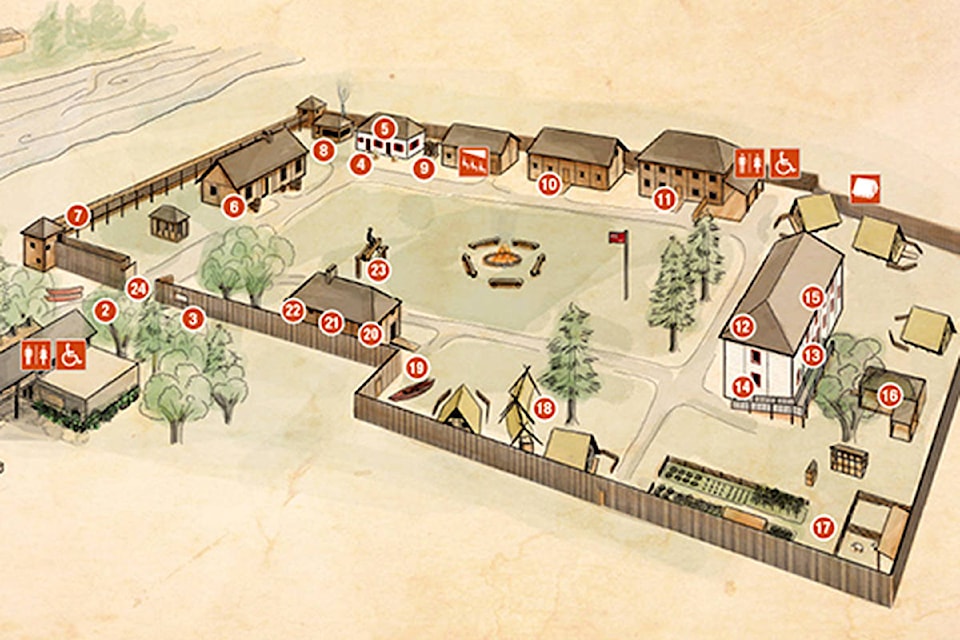When the weather turns ugly, and rain or snow blanket the West Coast, children desire to explore local history is dampened.
But a new indoor children’s play area at the Fort Langley National Historic Site, complete with interactive exhibits, was opened today (Tuesday). And the ribbon cutting was officially performed by none other than children.
Transformation of the exhibits inside the storehouse have been a while in the planning, explained the fort’s promotions officer Nancy Hildebrand – who was on hand for the today’s opening.
“Fort Langley National Historic Site has been planning a dedicated indoor children’s exhibit for a number of years as part of the site’s interpretive plan, and is thrilled to share this new space with families,” she said.
Inside the building, there are now a series of interactive displays, including a dedicated toddler area, where kids can learn through play about local history and discover – through themes of trade and transportation – what life was like in the 1800s, from the perspective of both First Nations communities and fur traders.
“Here, children can have fun trading salmon for blankets, gathering cranberries into barrels, climbing in boats, and more,” Hildebrand said.
At the trade window node, children will discover resources that the First Nations people used, such as cranberries and salmon, and the European trade goods such as axe heads and blankets that the HBC traders brought with them, she elaborated.
There are two boats to climb in, one a Coast Salish canoe and one a fur trader’s bateau.
On a large map of the land now called British Columbia, families can explore the way the land looked before roads were built, and see where First Nations communities lived and how the Hudson’s Bay Company integrated itself into the network of trade.
.
Free admission extended
Last year, the fort – along with other Park Canada sites – provided free admission to celebrate Canada 150. This year, that free admission has been extended, but only to those 17 years and younger.
Today’s unveiling of a designated indoor children’s area, along with the free admission program this year, gives more reason to bring youth inside the walls of the fort and to encourage them to learn about the history, culture, of that era, Hildebrand said.
.
Celebrating indigenous contributions
In addition to this new exhibit space, visitors are invited to explore curated selections from the Indigenous Ingenuity exhibit, which is on temporary loan from the Montreal Science Centre.
This special display, located upstairs in the Big House, allows visitors to explore the creativity of Indigenous peoples from North America through a series of interactive activities and features, Hildebrand said.
This special exhibit allows visitors to explore timeless Indigenous science through an interactive experience featuring activities like virtual canoe racing, dog sledding, and fishing.
“Through its playful, game-filled environment, visitors discover the cultural and technological wealth of the First Peoples, creating opportunities for learning and better understanding of Indigenous cultures and history,” she said.
“It is one of the first times that First People’s ancestral values and knowledge have been broached through the lens of science and innovation. Its interactivity and fundamentally modern point of view sets it apart from the presentation of Indigenous culture in history museums. Here, traditional Indigenous knowledge and techniques are presented alongside modern science, as mutually complementary.”
.
How the fort began
In 1827, the Hudson’s Bay Company built Fort Langley strategically to join the network of trade among Indigenous communities along the banks of the mighty Fraser River.
Through the years, the fort maintained a good and peaceful trade in furs, salmon, and even cranberries with the Indigenous people.
In 1858, a gold rush brought thousands of prospectors to the area, creating a need for law and order.
On Nov. 19, 1858, Sir James Douglas read Queen Victoria’s proclamation at Fort Langley that declared the land a colony called “British Columbia.”
The fort continued to operate until 1886, and became a historic site in 1923.

